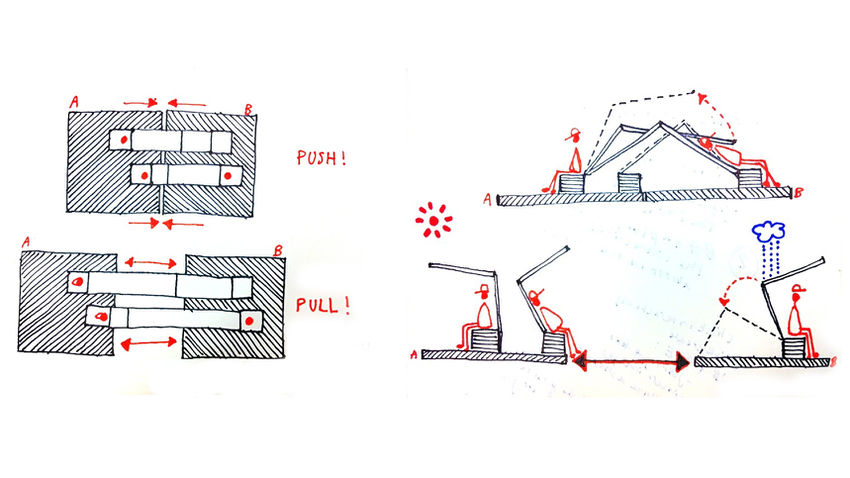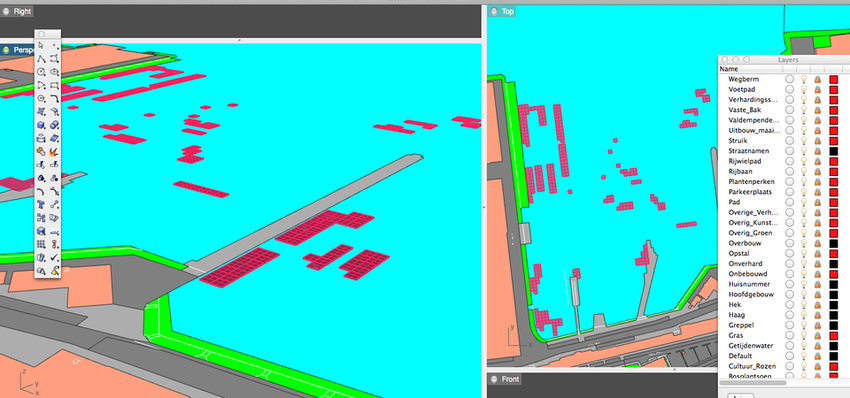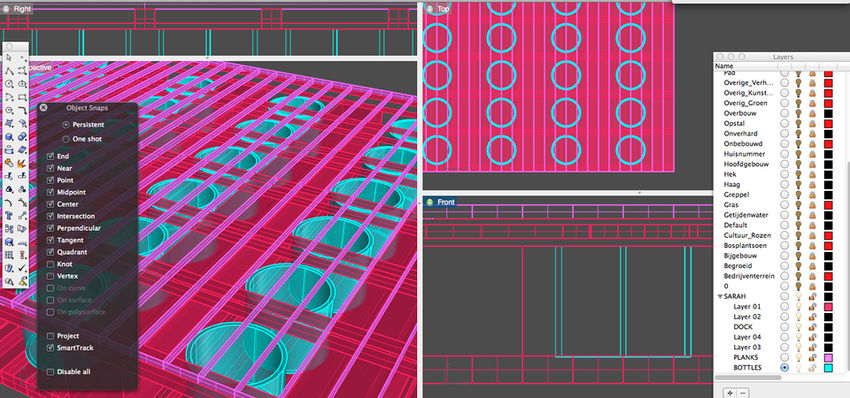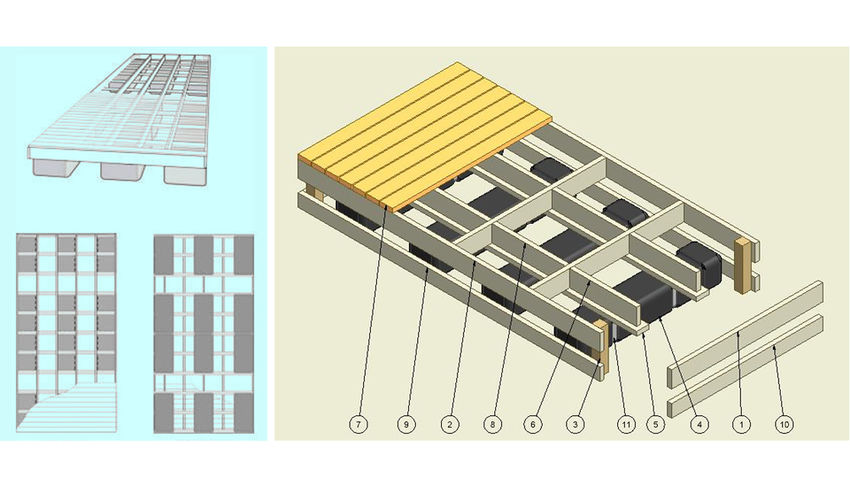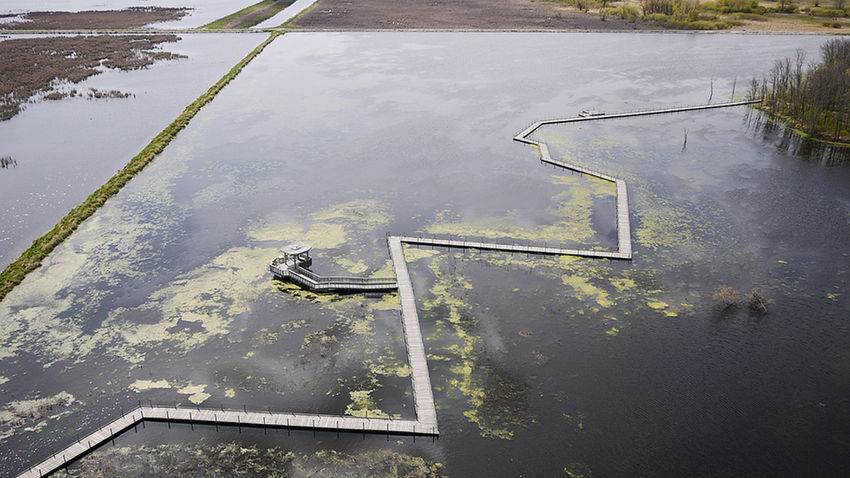project23:Styling
| Line 3: | Line 3: | ||
</div> | </div> | ||
| − | |||
== '''Island Pod Pairs''' == | == '''Island Pod Pairs''' == | ||
| Line 15: | Line 14: | ||
[[File:PROJECT23_Sketch04.jpg|850px]] | [[File:PROJECT23_Sketch04.jpg|850px]] | ||
</div> | </div> | ||
| − | |||
| − | |||
| − | |||
| Line 39: | Line 35: | ||
This massing model shows the Islands as a network of connective modules, clustered in one possible scenario. | This massing model shows the Islands as a network of connective modules, clustered in one possible scenario. | ||
Since the islands cover a maximum surface area on the water, solar harvesting can be optimized and farm plants receive generous sun exposure. | Since the islands cover a maximum surface area on the water, solar harvesting can be optimized and farm plants receive generous sun exposure. | ||
| + | |||
| + | |||
| Line 46: | Line 44: | ||
| − | |||
| − | + | == '''Detail Model''' == | |
| + | The most crucial goal of the form for ISLANDS is connectivity. The aim is to connect outsiders (at sea) with insiders (on land) -- essentially, to bridge marine life with shore life. This includes sailors, students, workers, and local residents -- as reflected in the CONNECTIONS section. Therefore, the form should be modular and nest-able (or tessellated somehow). The various organizations possible for the modules (as a group) should react to any number of parameters such as water surface area / human density, project density, climate, daytime/nighttime, sunlight/shading, etc. In addition, the modules themselves could react to such parameters -- specifically, with the bend angle of the connective bands/gangways. | ||
| − | |||
| − | |||
| − | |||
| − | |||
| − | |||
| − | + | <div style="width: 850px; height: 478px; margin: 0; padding: 0px; overflow: hidden;"> | |
| − | + | [[File:PROJECT23_Reference02.jpg|850px]] | |
| − | + | </div> | |
| − | + | == '''References''' == | |
| − | + | ||
| − | + | In order to provide a dry, sheltered place for students to chill during lunch break, | |
| + | The form must also support a floating solar farm, with maximized surface area and flexible angle toward the sun. | ||
| + | To transport people to all other projects on-site and all surrounding points along the shoreline. | ||
| + | Can also act as a pontoon for boat repair. | ||
| + | Reflect on your styling decisions and how they relate to the general concept and interactions you’ve identified. | ||
| Line 72: | Line 69: | ||
[[File:PROJECT23_Reference03.jpg|850px]] | [[File:PROJECT23_Reference03.jpg|850px]] | ||
</div> | </div> | ||
| − | |||
| − | |||
| Line 79: | Line 74: | ||
[[File:PROJECT23 Reference01.jpeg|850px]] | [[File:PROJECT23 Reference01.jpeg|850px]] | ||
</div> | </div> | ||
| − | |||
| − | |||
| − | |||
| − | |||
| − | |||
Revision as of 00:18, 25 September 2012
Contents |
Island Pod Pairs
PUSH: When a modular pod-pair is pushed together, connective bands bend to form seating, shading, or shelter from rain.
PULL: When the pod-pair is pulled apart, the bands are flattened to create a connective bridge, or alternatively broken apart for further configurations.
Connections
LEFT: Puzzle Piece Connections. Users can build to their own taste, for their own needs.
RIGHT: Different Module, Different Funtion: 1) Bath. 2) Farm. 3) 2-Strap 4) 3-Strap
Massing Model
ISLANDS float freely and have the capacity to regroup and cluster around certain projects according to need. This massing model shows the Islands as a network of connective modules, clustered in one possible scenario. Since the islands cover a maximum surface area on the water, solar harvesting can be optimized and farm plants receive generous sun exposure.
Detail Model
The most crucial goal of the form for ISLANDS is connectivity. The aim is to connect outsiders (at sea) with insiders (on land) -- essentially, to bridge marine life with shore life. This includes sailors, students, workers, and local residents -- as reflected in the CONNECTIONS section. Therefore, the form should be modular and nest-able (or tessellated somehow). The various organizations possible for the modules (as a group) should react to any number of parameters such as water surface area / human density, project density, climate, daytime/nighttime, sunlight/shading, etc. In addition, the modules themselves could react to such parameters -- specifically, with the bend angle of the connective bands/gangways.
References
In order to provide a dry, sheltered place for students to chill during lunch break, The form must also support a floating solar farm, with maximized surface area and flexible angle toward the sun. To transport people to all other projects on-site and all surrounding points along the shoreline. Can also act as a pontoon for boat repair. Reflect on your styling decisions and how they relate to the general concept and interactions you’ve identified.
